Before you start jamming in D major, we need to establish which chords you’ll be working with.
Generally speaking, you’ll use the chords D major, E minor, F# minor, G major, A major, B minor, and C# diminished in the key of D major. You may also want to use extended chords such as Dmaj7, Em7, F#m7, Gmaj7, A7, Bm7, and C#m7b5.
The 7 Notes of D Major
The first thing you need to know are the notes of D Major.
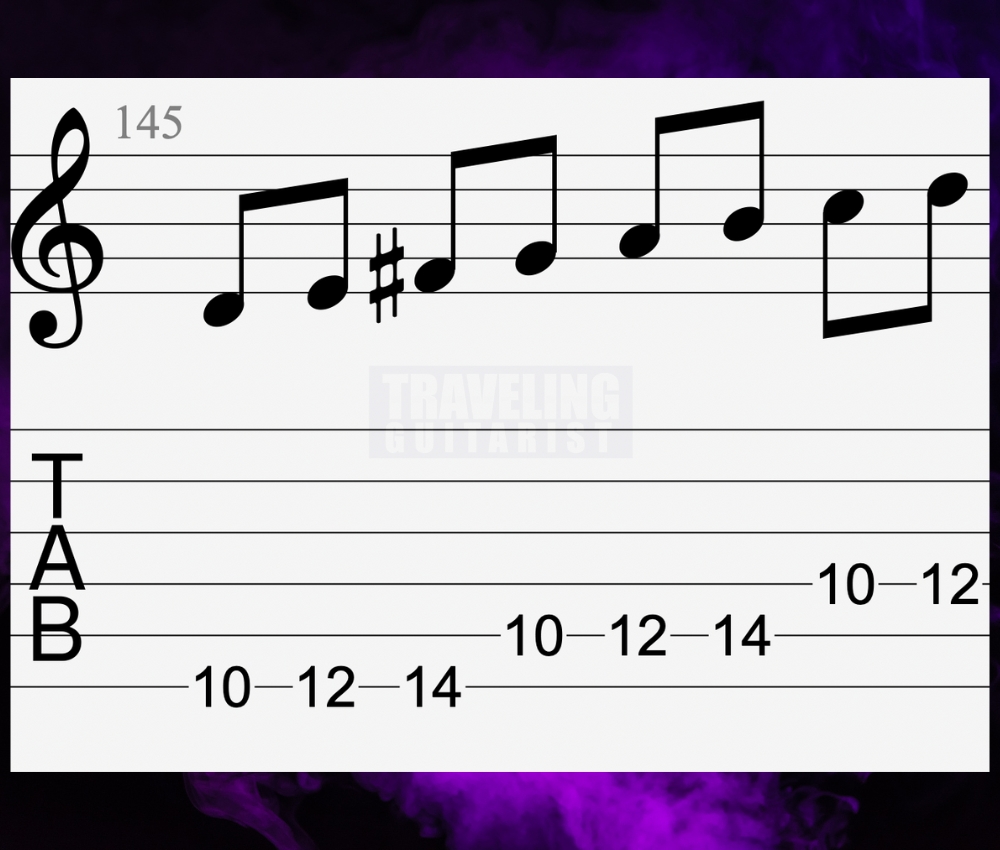
The Scale Degrees of D Major
1 – 2 – 3 – 4 – 5 – 6 – 7
Whole Tone – Whole Tone – Semi Tone – Whole Tone – Whole Tone – Whole Tone – Semi Tone
What makes a chord? You need a root, third, and a fifth to make a standard chord in Western harmony.
A major chord, such as D major, consists of a root (D), a major third (D to F#), and a perfect fifth (D to A).
A Major 3rd Interval is a distance of 4 semi-tones (or 4 frets).
A Minor Chord, such as E Minor, consists of a root (E), a Minor 3rd (E to G), and a Perfect 5th (E to B).
A Minor 3rd Interval is a distance of 3 semi-tones.
A Diminished Chord, such as C# Diminished, consists of a Root (C#), a Minor 3rd (C# to E) and a Diminished 5th (C# to G).
A Diminished 5th interval is a distance of 6 semi-tones.
We’ll reference this information throughout the rest of the article.
All 7 Chords of D Major
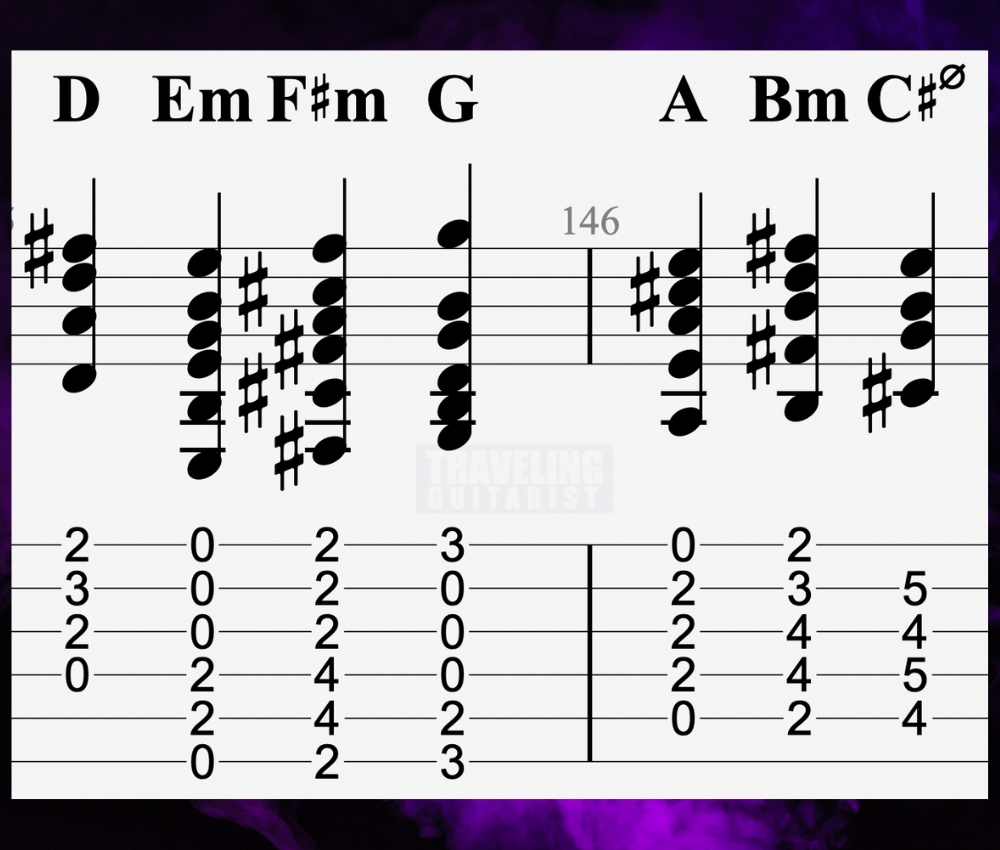
If you add the minor 7th to the A Major chord (the G), this will make the A Major chord a Dominant 7th – an A7.
A Dominant 7th chord, for example, an A7, is made up of a Major 3rd (A to C#), Perfect 5th (A to E), and Minor 7th (A to G).
1) D Major (Dmaj7)

(It’s important to note that the first triad has an open string D)
Consisting of the notes D, F#, and A, you can play this chord with only two fingers.
The F# in D Major is the major third. It’s the part of the chord that gives it its major sound because the distance between these two notes is a major 3rd (4 semitones).
When we add the seventh degree of D (C#), we get a Dmaj7 chord. An example of its use is in the song ‘Everlong’ by the Foo Fighters.
2) E Minor (Em7)
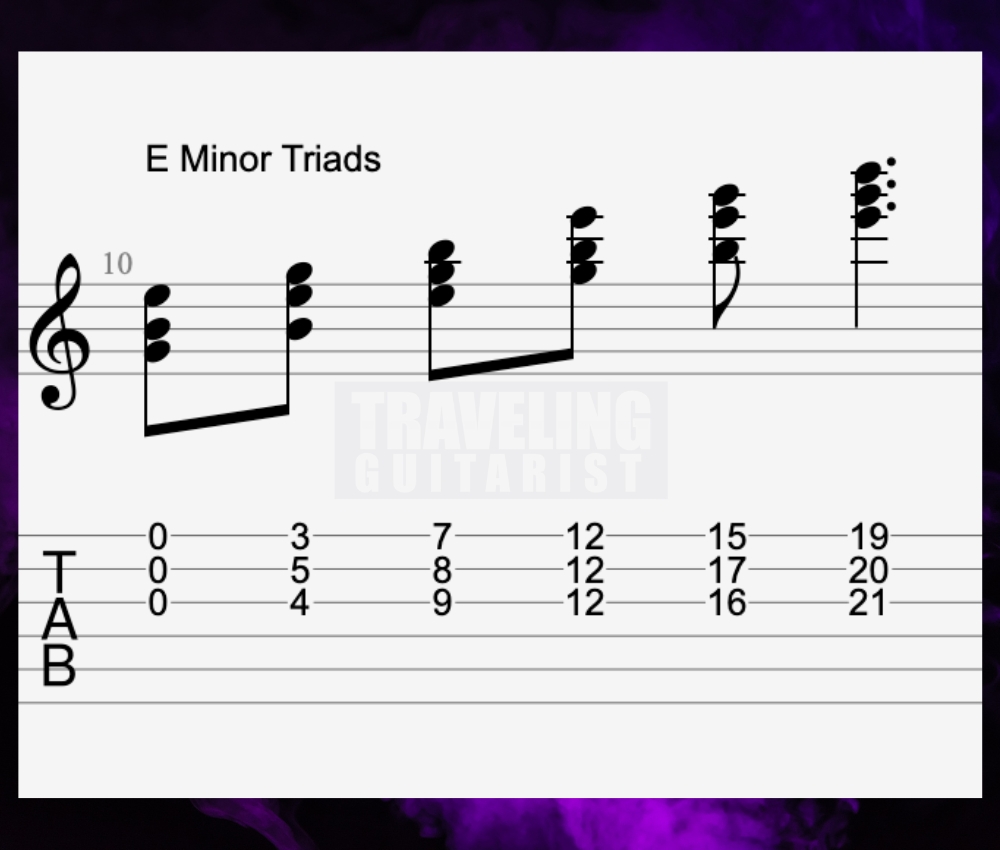
E Minor consists of the notes E, G, and B.
The G in E Minor is the minor third. It’s the part of the chord that gives it its minor sound because the distance between these two notes is a minor 3rd (3 semitones).
If we add the 7th, counting from E (which is the D note), this will give us the E minor 7th.

3) F# Minor (F#m7)
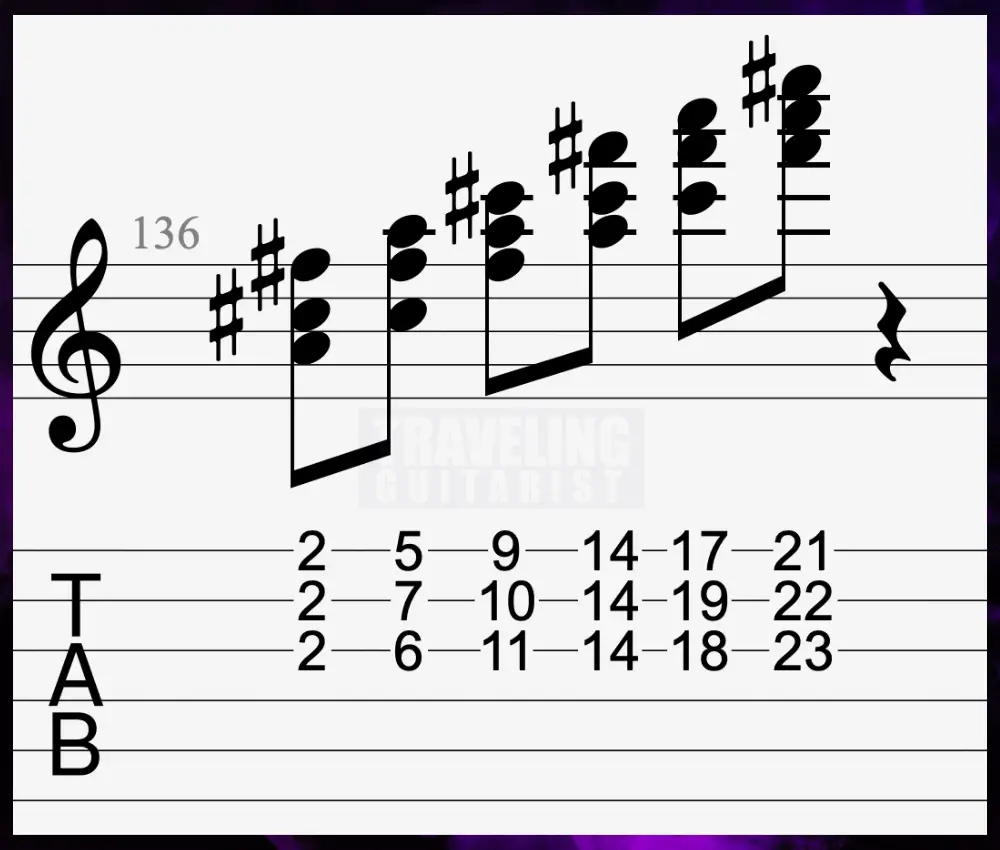
F# Minor consists of the notes F#, A, and C#.
The A in F# Minor is the minor third. It’s the part of the chord that gives it its minor sound because the distance between these two notes is a minor 3rd (3 semitones).
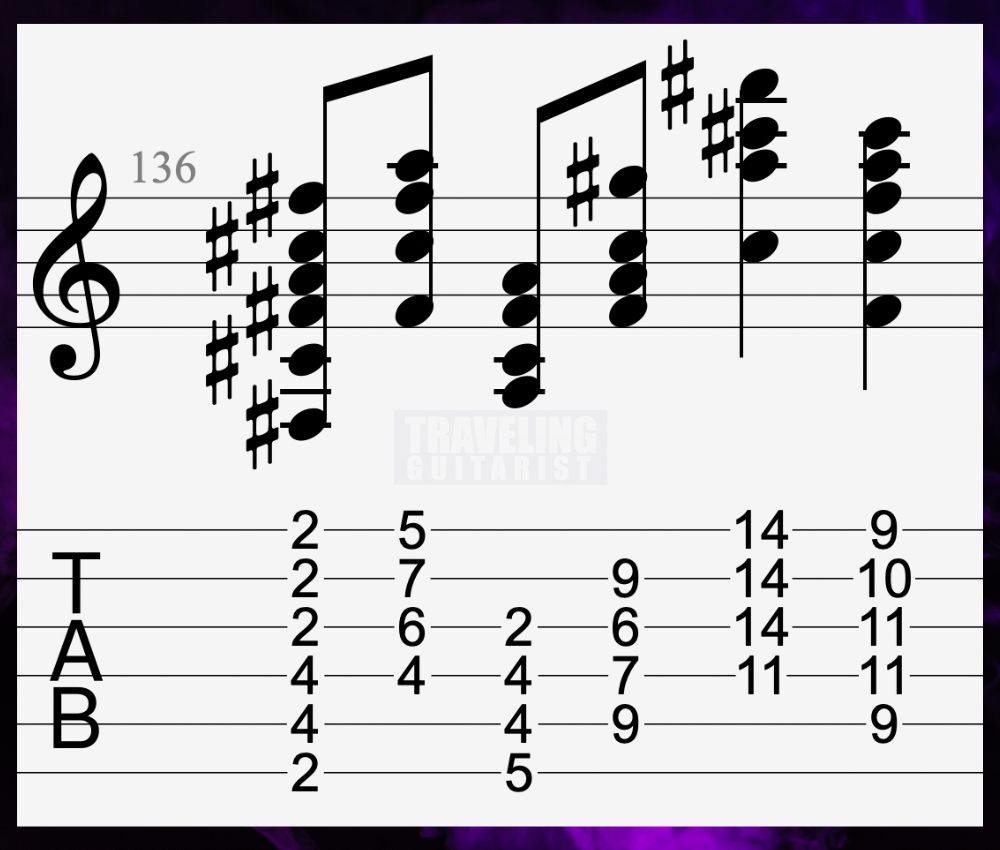
To make the F# Minor an F# Minor 7th chord, add the 7th (counting up from F#), which will give you the E.
4) G Major (Gmaj7)
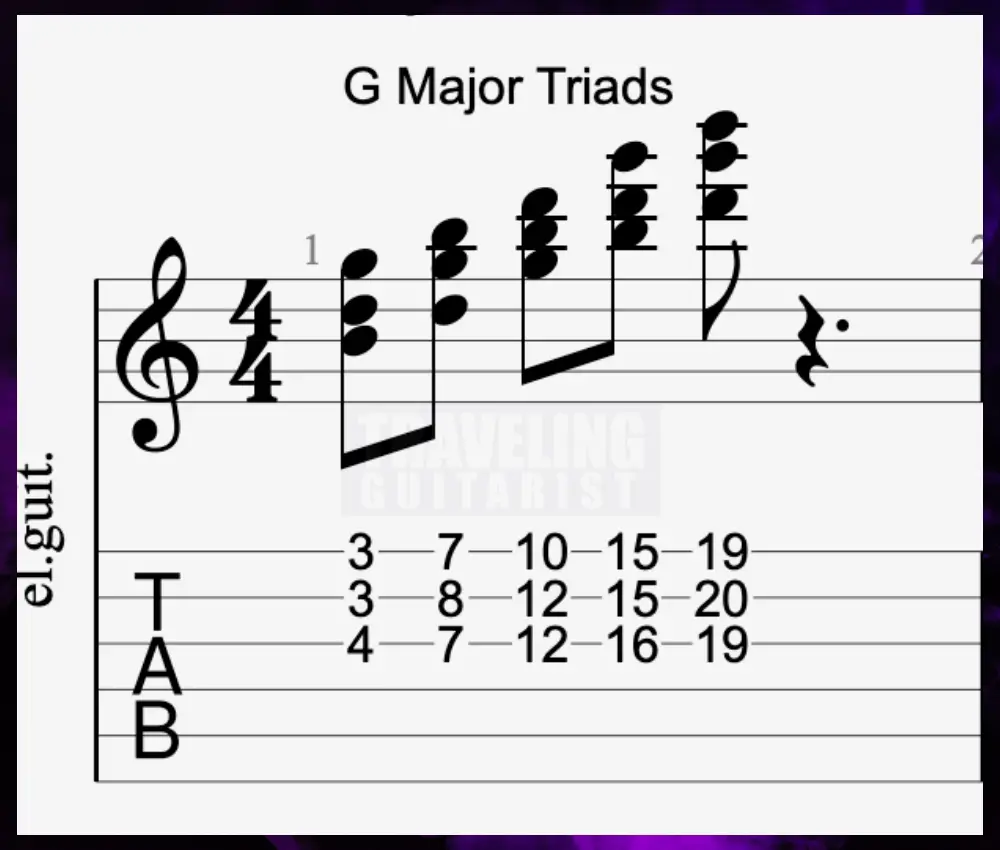
G Major consists of the notes G, B, and D.
The B in G Major is the major third. It’s the part of the chord that gives it its major sound because the distance between these two notes is a major 3rd (4 semitones).
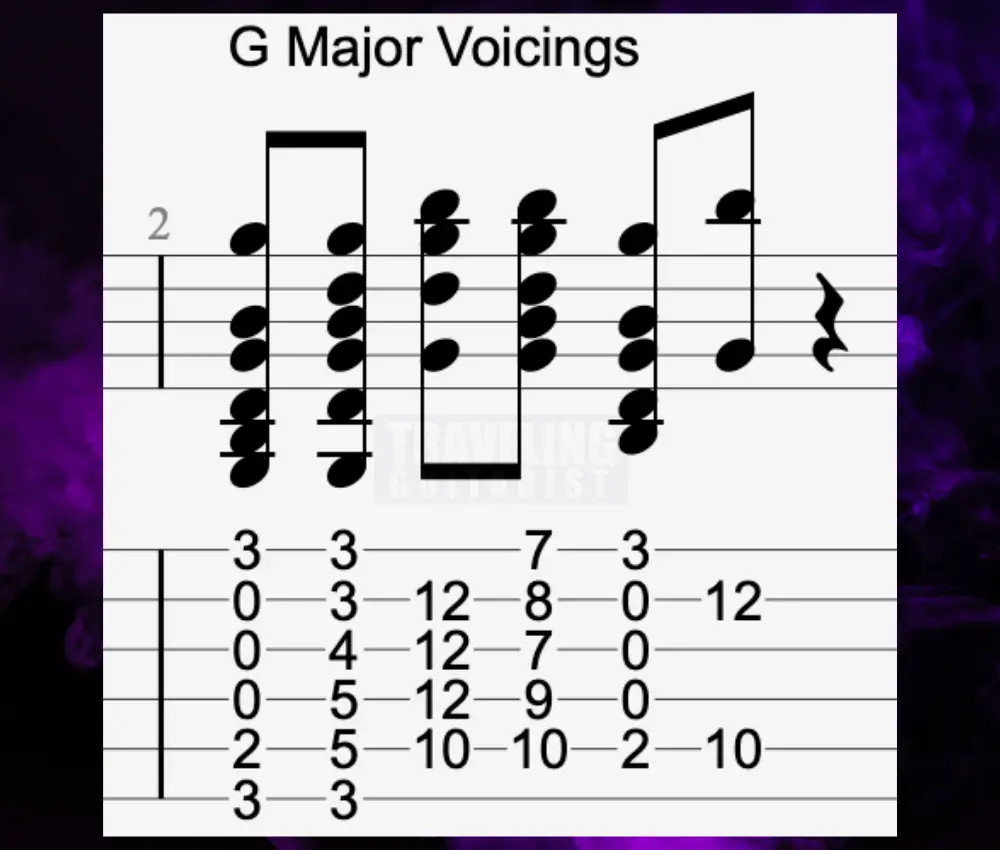
To make a G Major chord a major 7th chord, add the 7th (counting from G – which is F#).
5) A Major (A7)

A Major consists of the notes A, C#, and E.
The C# in A Major is the major third. It’s the part of the chord that gives it its major sound because the distance between these two notes is a major 3rd (4 semitones).
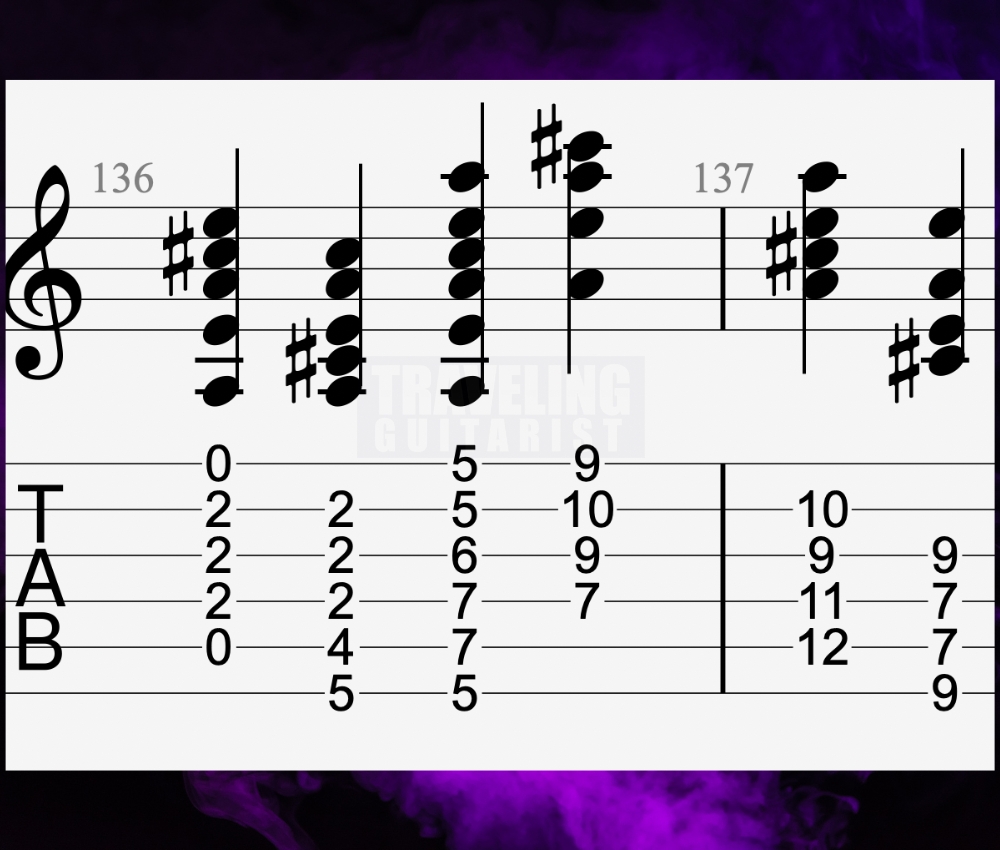
To make the A Major chord an A Major 7th instead, add the 7th (counting from the A – which is G#). To make it an A7 chord, you would make the G a G-natural instead.
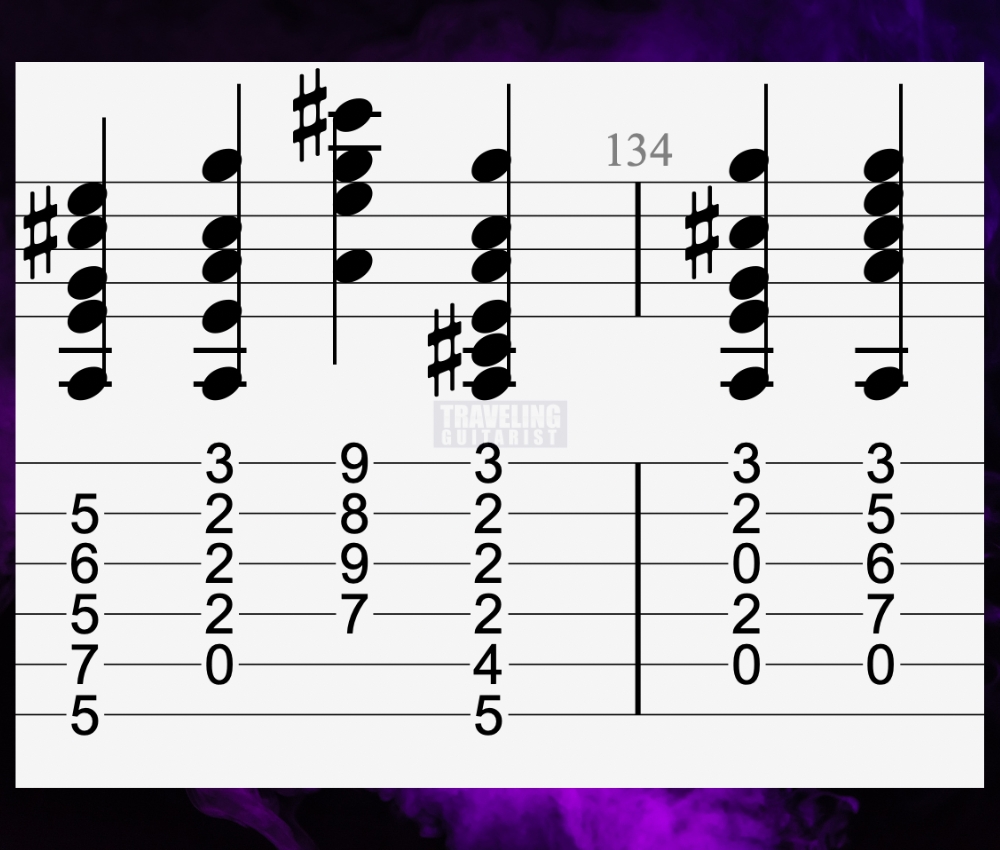
6) B Minor (Bm7)

B Minor consists of the notes B, D, and F.
The D in B Minor is the minor third. It’s the part of the chord that gives it its minor sound because the distance between these two notes is a minor 3rd (3 semitones).
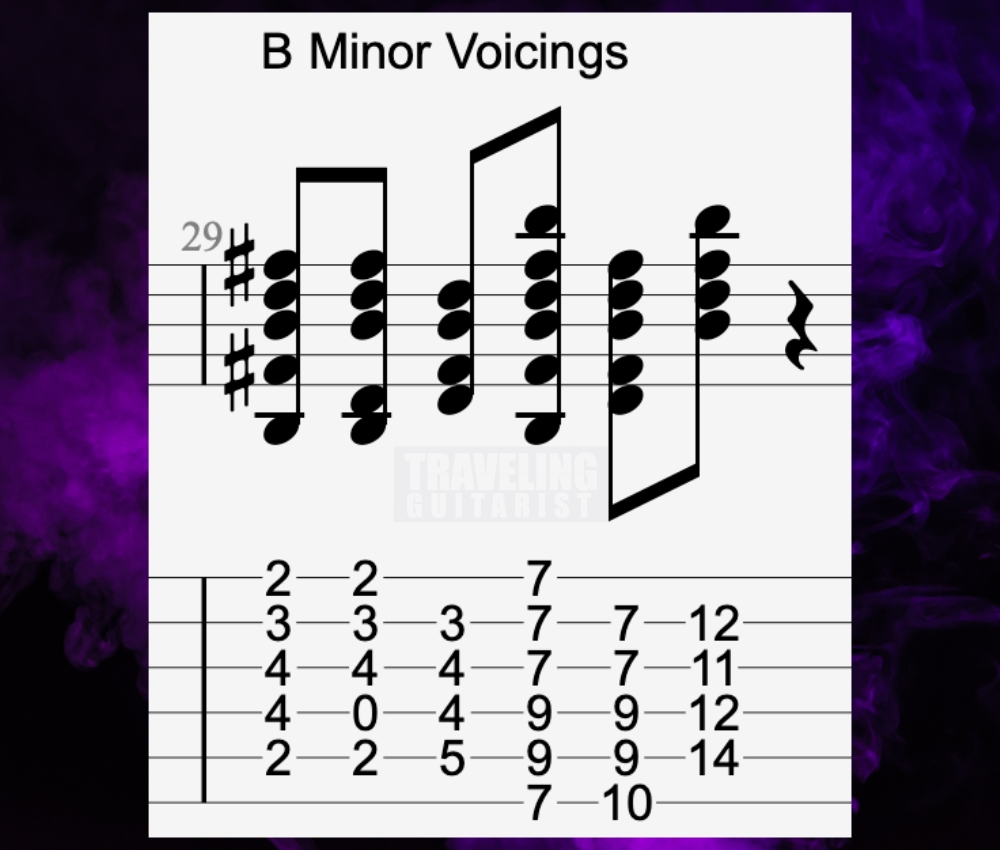
To make your B minor chord a minor 7th chord, add the 7th (counting up from B – which is “A”). B, D, F#, and A are the notes of the B Minor 7th chord.
7) C# Diminished (C#m7(b5))
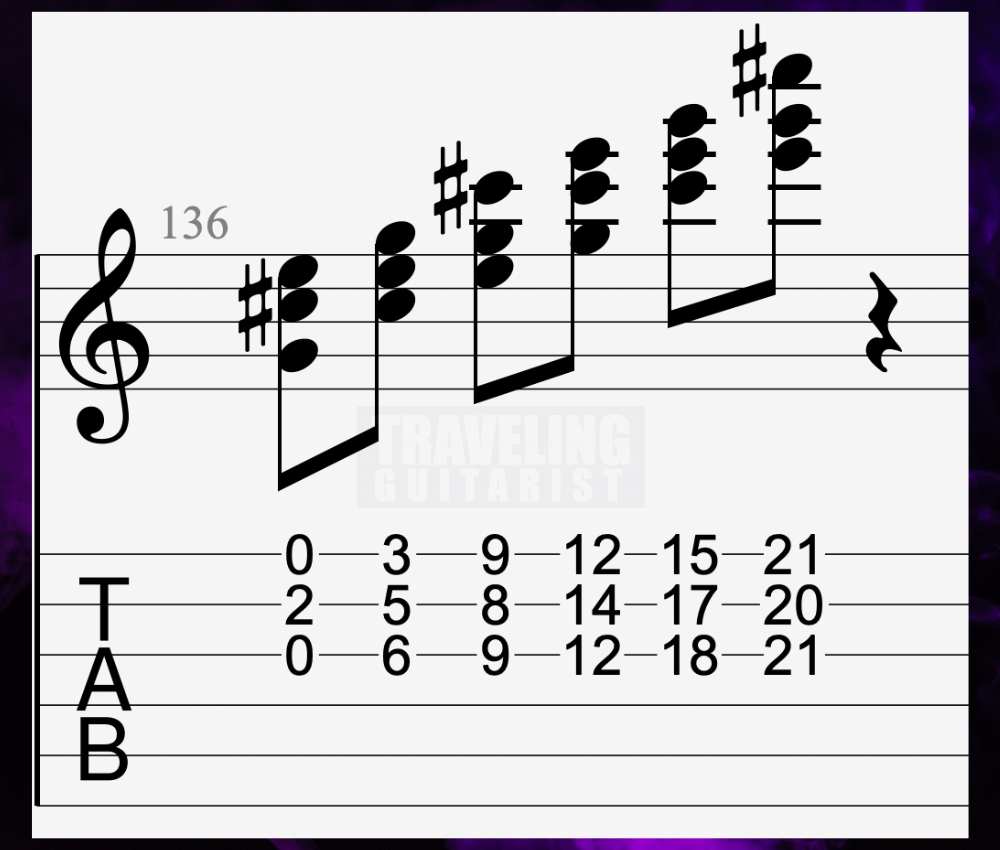
The C# Diminished chord consists of C#, E, and G.
Diminished chords are defined by having a minor third (C# to E) and a diminished fifth (C# to G). Essentially, they’re minor chords with a flat fifth interval.
When we extend the chord, it becomes a half-diminished or minor seven flat five chord due to the use of a minor seventh and not a double-flat seventh.
What Are the Primary and Secondary Chords of D Major?
Every key, be it major or minor, has a set of primary and secondary chords.
Understanding which chords are primary and secondary can help you understand the relationships and dynamics one chord can have with the other chords in the key.
Primary Chords
In the key of D major, our primary chords are D major, G major, and A major. Notice that the key and the primary chords are all major and the primary chords are also the first, fourth, and fifth chords in the key.
Especially for major keys, these core facets will always be the case. Additionally, it’s true that these three primary chords flow into each other, building tension until we resolve again to the first chord.
What this means is that we could base the chord progression of our song around solely primary chords by starting with the first chord, transitioning to the fourth chord, climaxing with the fifth chord, then settling back down to the first.
Secondary Chords
Put simply, secondary chords are all those which are not primary. Here, those will be our E minor, F# minor, B minor, and C# diminished chords. In most keys, secondary chords will be the second, third, sixth, and seventh chords in the key.
Generally, you’ll use these chords to add your own personal flair to a chord progression and accentuate certain tones or emotional beats you want to come through in the song.
For example, in “Everlong,” from the Foo Fighters, the verse starts with the first chord, Dmaj7. It then shifts to a variation of the sixth chord, Bsus2, and moves on to the fourth chord, Gsus2. Finally, it tracks back to the sixth, then resolves back to the first chord.
What makes this progression work is the similarities between each chord. Each sounds a bit different but has some artifacts of the previous chord in the progression. This structure gives the song a firm chordal foundation.
What Are The 3 “Major” Modes of D Major?
Most scales have seven degrees, but did you know that you can technically start the scale from any one of those degrees?
Depending on the chord we use as the underlying melody, we can manipulate the scale and the key to sound significantly different. Here, we’ll be looking at the major modes of D major, which correspond to the primary chords we discussed earlier.
1) D Ionian
The Ionian scale is the standard major scale.
Play the notes of D Major over a D Major to hear what the ionian mode sounds like.
Generally, you don’t have to consciously try to make a progression sound Ionian because that’s just what naturally happens.
2) G Lydian
The Lydian mode of D major starts and ends with G.
Play the notes of D Major over the G Major chord to hear what the G Lydian mode sounds like.
That defining note in Lydian is the fourth. For context, we are talking about the fourth of G, which is C#. However, we do not want to use a C# diminished chord, as this leads the ear to D major.
3) A Mixolydian
The A Mixolydian of D Major starts on A and goes up to A.
Play the notes of D Major over a A7 chord to hear what that A Mixolydian mode sounds like.
To play in the Mixolydian mode, we’ll adhere to the same core rules. However, the defining note in the Mixolydian scale is the seventh degree. If A is our modal root, then the seventh is G.
Other Articles You May Be Interested In
- The Guitar Chords of C Major
- What Are the Most Beautiful Guitar Chords? [ANSWERED]
- What Guitar Chords Are Sad? [With Examples & Explanation]
- Why Is It Important To Learn Chords on Guitar? [SIMPLE]
- Why Triads Are Important To Learn on Guitar [ANSWERED]
- Free Fretboard Memorization Cheatsheet


 Written By :
Written By :
